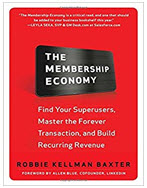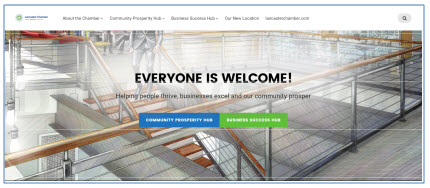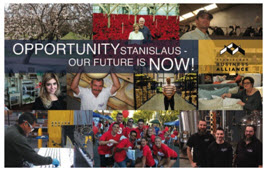What is the future of membership models?
- Will your revenue model be dependent on membership dues?
- Do customers need to be members to access your services and products?
- Is your mission member or community-centric?
These are important questions to contemplate as you envision the future of your organization. Whether you are a trade or professional association or a chamber of commerce, you have undoubtedly considered these questions through discussions with your peers.

Elevated discussions about the future of membership occurred after the release of two books, Race for Relevance by Mary Byers and Harrison Coerver and The End of Membership as We Know It by Sarah Sladek in 2011. What followed were articles, studies and special interest groups to delve into how demographic / psychographic, global, technology and generational trends would impact almost 100,000 non-profit organizations with a 501c (6) IRS designation.National industry organizations have stepped forward to respond – the American Society of Association Executives (ASAE) explored possible implications and strategies by funding studies like Exploring the Future of Associations in 2014 and the Association of Chamber of Commerce Executives (ACCE) convened a task force in 2016 to develop the Horizons Initiative: Chambers 2025, Eight Influences Shaping the Next Decade for Chambers of Commerce. A 9th influence was added by ACCE in 2017 on the Limitations of Government and how chambers should respond.
Yet, even with the plethora of information that is available on the Internet and through peer organizations, I am often asked, “Do you think ‘membership models’ will still exist?” Well, none of us has a crystal ball and can foresee the future. But, I have been thinking about it for quite some time and I want to share my collective thoughts for your consideration. I’d appreciate if you shared yours as well!
Recently, I have seen see three unique approaches that could potentially serve as future models for organizations that are currently membership-based:
1. Saas (Service as a Subscriber) Model
The original concept of SaaS (Software as a Service) became popular in 2011 as providers offered software licenses and access via the Internet, so you no longer needed to buy and install versions on your computers (e.g., Association Membership Software). Licenses are paid monthly or you receive a discount by paying annually (e.g., Survey Monkey, Office 365).
The reality is that Subscription Business Models have been around longer than the SaaS concept. The original model was first pioneered by magazines, newspapers, and book clubs. Rather than selling individual products or services, subscriptions sell periodic access for a set fee (consider symphony, museum or football season tickets). Even wine clubs, fitness centers, car washes and lawn mowing services, and other categories now use subscriptions to offer month-to-month access that can be canceled at any time (e.g., Amazon Prime, Netflix). Some companies offer subscriptions on an annual basis, allow subscribers to pay monthly, but assess penalties if subscribers cancel before the agreed upon contract (e.g., cable tv, cell phone services).

Author of The Membership Economy, Robbie Kellman Baxter, points out that the world around us has been using subscription business models for quite some time and that “renewals” are passé! More associations are deploying a SaaS model and enjoy increased revenue and “members.”
The Air Conditioning Contractors of America (ACCA) offers a $39/mo. membership rather than a $450 annual one which is used by 40% of their members. Monthly fees are automatically paid by credit card. Computing Technology Industry Association (CompTIA) offers a free subscription and premium memberships that provide benefits through recognition, advertising, access to subscribers, and VIP benefits not offered through subscriptions. Incorporating a freemium offer attracts more customers, allows an easy process to join and engage, with opportunities to upgrade to other packages (aka “tiers” that offer more perks)!
2. Customers, Partners and Investors Model
Rather than focus on only our members, we could serve a broader pool of customers that could benefit from what we offer through an “unmembership” model with pay-as-you-go options or periodic subscriptions. This allows organizations to serve a larger market and provide information, products/ services, and opportunities that are open to anyone who pays for access.

The Lancaster Chamber in PA is leading the way by structuring its focus around a Community Prosperity Hub and a Business Success Hub. The Community Prosperity Hub undertakes key initiatives with collaborative partnerships to create an environment that provides prosperity and opportunities for businesses and residents (i.e., education, workforce development, affordability, advocacy and quality of life.) These initiatives are funded by investors ($500-$15,000+). The Business Success Hub offers connectivity, programs and resources to support businesses and professionals. Customers can engage through networking, professional development, training certifications, co-working, online resources and other fee-for-services.
3. Economic and Community Betterment Model

A concept used with organizations with a primary role of economic and community development could become a standalone model that replaces “membership.” Associations and chambers of commerce of all sizes can bring together industry and community leaders to discuss challenges and solutions that would benefit their constituents.
As the leading organization, you create a comprehensive plan with an annual budget to implement the initiatives, develop investor levels ($500-$100,000) with benefits, and conduct a fundraising campaign that welcomes all community stakeholders to contribute. This particular approach is currently offered by community planning experts such as Funding Solutions and Market Street Services.
These future models provide customer-centric options and require organizations to be relevant to stakeholders or they will seek another provider. How will these trends and approaches influence your future model?
Cathi Hight helps organizations manage constant change, develop customer-centricity and “work smarter, not harder”. She is President of Hight Performance Group and serves as the SVP of Growth Strategy and Investor Relations for the Austin Chamber. Cathi is the developer of The Member Retention Kit, A New Approach to Tiered Membership and Work Smarter, Not Harder. Learn more at www.hightperformance.com.

